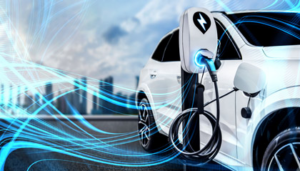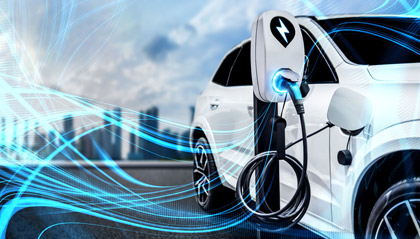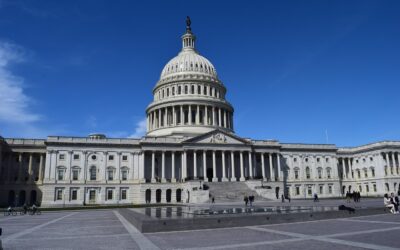The significance of electrification, a trend now sweeping America, must be noted. Its economic impact will be historic, and numerous industries will be changed forever.
More than half a trillion dollars has already been allocated through federal programs to fund electrification of the country’s infrastructure. It’s important to remember that infrastructure covers all basic physical and organizational structures required for the operation of society – in other words, almost everything of significance to a country’s economy.
The funding and the changes that are already highly visible reflect the country’s efforts to move America to the use of cleaner energy in every way possible… as quickly as possible.
The term electrification can be found in almost every state, local and higher education budget available today. The trend is radiating across all segments of America’s infrastructure. That’s because public planning officials are universally prioritizing investments in electrification projects.

After many years of neglecting the country’s infrastructure, the federal government is putting its full financial weight behind a mammoth effort to move the country to clean energy. The effort is extremely significant and will change the direction of many types of collaborations between public and private sector engagements.
As of April 2023, more than 80 projects related to electrification are in the launch stage in America with $200 billion in financial support. The jobs that will be created are an additional benefit to clean energy efforts and just these 80 projects are expected to produce 70,000 new jobs. Developments in solar and wind manufacturing are predicted to result in more than one million new jobs within the next seven years.
In April of this year, the Federal Highway Administration announced it would financially support projects that will electrify infrastructure for America’s ports. The first round of a $400 million investment in port projects is available now. Funding will be awarded to projects that reduce emissions from idle trucks at ports, support on-truck technologies, employ low-emissions powertrains or fuels on trucks, mitigate congestion and/or improve the efficiency of port operations. Applications for this funding will be accepted until late June 2023.
The $7.5 billion National Electric Vehicle Infrastructure (NEVI) program recently issued rule changes that include new design standards to ensure public charging stations are available for all kinds of EVs. Data connectivity will become a staple of the nation’s EV charging infrastructure because of stipulations such as this. The program’s rule changes also create opportunities for GIS and other mapping technologies that track and showcase locations, pricing, accessibility, and real-time availability of chargers.
Standards and financial incentives related to electrification may change even more as the federal government evaluates broader energy needs. Last year, a study revealed that the U.S. would need 8.5 times the current amount of EV charging capacity by 2030 – just to meet federal deployment targets. In response, new incentives are available to foster public-private partnership initiatives that can speed up the launch of more projects.
Likewise, the Environmental Protection Agency (EPA) has introduced new incentives to encourage the production of more EVs and there are new and stricter regulations on tailpipe emissions from light to medium and heavy- duty highway vehicles. To abet a transition to electrified vehicles, the U.S. Treasury Department will provide EV-related tax credits to make it more affordable for manufacturers to purchase real estate for EV production facilities. Additionally, car owners will be entitled to personal tax credits for buying EVs.
State and local governments are now introducing their supplementary tax incentives for electrification—even more indication of broadening support. California residents who purchase an electric or hybrid car may be entitled to as much as $24,500 in tax rebates. The state also provides highly favorable, “fee-free” loans to help residents electrify their home appliances, even if the home in question is a rental.
Last month, state lawmakers in New Jersey announced the exploration of additional state-based financial incentives, such as rebates and tax credits for electrification. Michigan State University was awarded $500,000 to plan and design the state’s future EV charging network. The work will first focus on efforts to build out EV charging sites in the urban centers of Detroit and Grand Rapids.
Washington State is extending electrification efforts to sea-faring vessels. The state transportation department has issued a request for information (RFI) regarding an electrification project that involves constructing several ferries with hybrid electric propulsion systems. In April, the state’s Department of Commerce awarded $10 million to projects that deploy
grid-interactive buildings and installation of high-efficiency electric equipment. The grants are expected to result in numerous public-private partnerships throughout the state.
In Florida, St. Petersburg officials announced that a plan is being considered that will require all new commercial and residential projects to include support for EV charging infrastructure. The proposal would require any project (even affordable housing) that results in 20 or more parking spaces to include EV charging stations.
In Jacksonville, Fla., electrification is at the heart of a major transit project in the early stages of development. The city’s transportation authority is hiring a consultant to oversee preliminary design of projects in an upcoming phase of its Ultimate Urban Circulator plan. These projects will ultimately convert an existing monorail into an electrified Connected Automated Vehicle corridor. The city will deploy a new fleet of battery electric buses which will be supported by new charging stations along all transit bus routes. A projected budget for the project is expected soon.
Officials in Milwaukee County, Wis., hope to electrify a major airport. The county will contract with a consultant to conduct a site evaluation report to determine electrification needs at Mitchell International Airport. Once needs are identified, the consultant will prescribe options for electrifying the airport to reduce current emission levels.
In Loudoun County, Va., officials plan to spend over $579 million on projects to electrify a pollution control plant. Proposed electrification upgrades will include replacement of existing biosolid facilities and replacement of the entire electrical system.
There are many reasons to watch and monitor this fast-moving electrification trend. Companies that sell to government will be well-served to develop solutions for the upcoming abundance of projects related to electrification.







